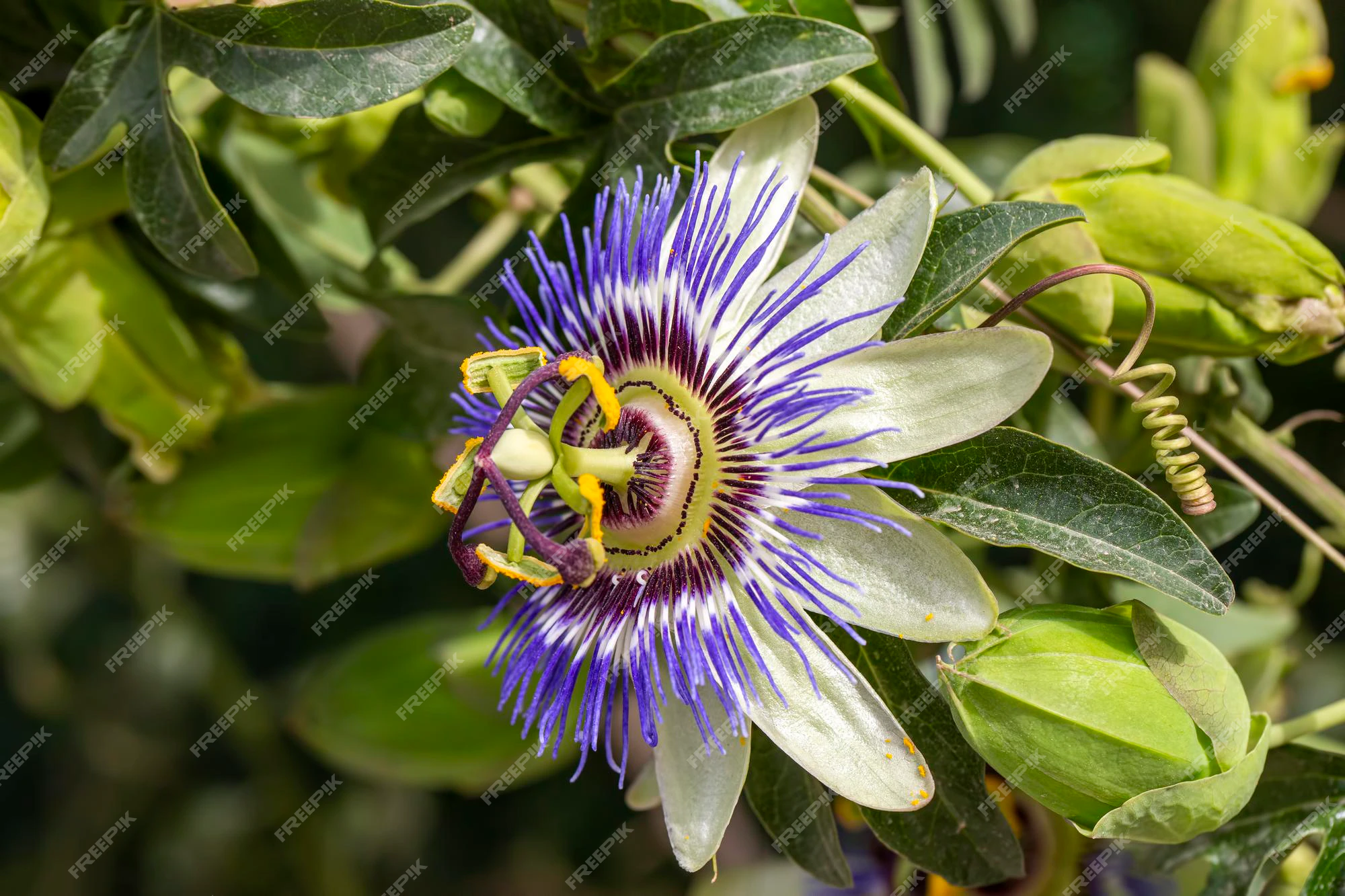
Passion fruit flowers are a sight to behold, with their delicate petals and vibrant colors. These flowers, which belong to the Passiflora genus, are not only a feast for the eyes but also offer a range of nutritional benefits. In this article, we will explore the enchanting world of passion fruit flowers, from their captivating beauty to their remarkable health benefits. Join me as we take a closer look at these exquisite blooms and uncover the wonders they hold.
The Beauty of Passion Fruit Flowers
Passion fruit flowers are truly a work of art in nature. Their blooms come in a variety of colors, including shades of purple, pink, and white. The petals are intricately designed, with a unique structure that sets them apart from other flowers. The vibrant hues and intricate patterns of passion fruit flowers make them a popular choice for floral arrangements and garden displays.
Anatomy of a Passion Fruit Flower
To truly appreciate the beauty of passion fruit flowers, it is important to understand their anatomy. Each flower consists of several distinct parts. The sepals, which are the outermost part of the flower, protect the delicate petals within. The petals themselves are the colorful and eye-catching part of the flower. Inside the petals, you will find the stamens and pistil. The stamens are the male reproductive organs, while the pistil is the female reproductive organ. Together, these parts work in harmony to ensure pollination and fertilization.
The Life Cycle of a Passion Fruit Flower
Passion fruit flowers have a fascinating life cycle that begins with the emergence of a bud. As the bud grows, it eventually opens up to reveal the stunning flower within. The flower is at its most vibrant and fragrant during this stage, attracting pollinators such as bees and butterflies. Once pollination occurs, the flower begins to wither and fade away, making room for the development of the fruit. The fruit grows from the fertilized ovary of the flower, eventually ripening into the delicious passion fruit we know and love.
Pollination and Fertilization of Passion Fruit Flowers
Pollination is a crucial step in the life cycle of passion fruit flowers. It is the process by which pollen is transferred from the stamens to the pistil, allowing fertilization to occur. In the case of passion fruit flowers, they rely on pollinators such as bees and butterflies to carry out this important task. These insects are attracted to the flower’s vibrant colors and sweet fragrance, making them ideal partners in the pollination process. Once the pollen reaches the pistil, fertilization takes place, leading to the formation of seeds within the fruit.
Nutritional Benefits of Passion Fruit Flowers
Passion fruit flowers offer more than just beauty; they are also packed with nutritional benefits. These flowers are a rich source of antioxidants, which help protect the body against free radicals and oxidative stress. They are also a good source of vitamins A and C, which support immune health and promote collagen production. Additionally, passion fruit flowers contain flavonoids, which have been shown to have anti-inflammatory and anti-cancer properties. Including passion fruit flowers in your diet can be a delicious way to boost your overall health and well-being.
Culinary Uses of Passion Fruit Flowers
While passion fruit flowers are often admired for their beauty, they can also be used in culinary creations. The flowers have a subtle, floral flavor that pairs well with both sweet and savory dishes. They can be used as a garnish for desserts, added to salads for a pop of color, or even infused into syrups and beverages. Passion fruit flowers can elevate any dish with their unique taste and visual appeal, making them a versatile ingredient in the kitchen.
Growing and Caring for Passion Fruit Flowers
If you’re captivated by the allure of passion fruit flowers and want to grow your own, you’re in luck. These flowers can be grown in a variety of climates, making them accessible to many gardeners. They thrive in well-drained soil and prefer a sunny location. Passion fruit flowers are typically grown from seeds or cuttings. To ensure their health and vitality, it is important to provide them with proper care and maintenance. Regular watering, fertilizing, and pruning will help your passion fruit flowers thrive and produce beautiful blooms year after year.
Popular Passion Fruit Flower Varieties
There are several popular varieties of passion fruit flowers, each with its own unique characteristics. The purple passion fruit (Passiflora edulis) is perhaps the most well-known variety, with its vibrant purple flowers and delicious fruit. The yellow passion fruit (Passiflora edulis f. flavicarpa) is another popular choice, known for its bright yellow flowers and tangy fruit. Other varieties, such as the giant granadilla (Passiflora quadrangularis) and the banana passion fruit (Passiflora mollissima), offer their own distinct beauty and flavors. Whichever variety you choose, passion fruit flowers are sure to bring joy and wonder to your garden.
Conclusion: Appreciating the Wonders of Passion Fruit Flowers
Passion fruit flowers are a true marvel of nature, with their exquisite blooms and remarkable nutritional benefits. From their captivating beauty to their culinary uses, these flowers offer a diverse range of pleasures. Whether you’re admiring their vibrant colors in a garden or enjoying their delicate flavor in a dish, passion fruit flowers have something to offer everyone. So next time you come across these enchanting blooms, take a moment to appreciate the wonders they hold.






